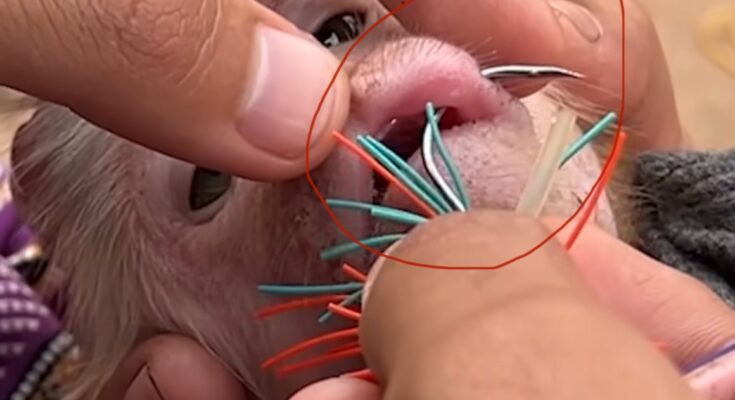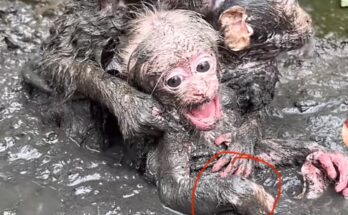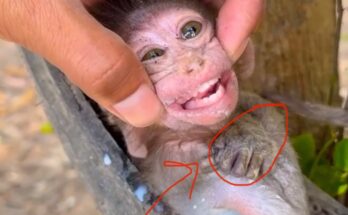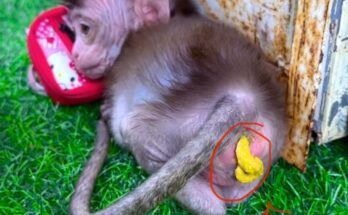Introduction
In forested regions, rescue centers, or even urban areas where monkeys interact with human habitats, it’s not uncommon to come across injured animals. One particularly delicate and urgent scenario involves a baby monkey with a sharp object lodged in its mouth. Unlike adult animals, baby monkeys are extremely vulnerable, and improper handling can lead to severe injury, infection, or even death. Here’s a step-by-step guide on how to provide timely and safe first aid to a baby monkey in such a distressing situation.
Step 1: Assess the Situation Safely
Before you act, observe the baby monkey from a distance. Is it conscious? Is it trying to remove the object on its own? Is the mother nearby? Many monkey species are highly protective, and getting close without understanding the social context can be dangerous for both you and the animal.
Do not approach unless the area is safe and the baby is alone or clearly in need of immediate help.
Step 2: Avoid Direct Contact Without Protection
Wild animals, even babies, can bite or scratch when in pain or scared. Use thick gloves if available. If not, use a towel or soft cloth to gently wrap the monkey for restraint. Never attempt to pry its mouth open with bare hands.
If the monkey is conscious and mobile, a humane trap or box might be necessary for transport to a vet.
Step 3: Stabilize Without Causing More Harm
If you can clearly see the sharp object and it’s superficially lodged (such as a thorn or splinter stuck in the lip or outer part of the mouth), you may try to gently remove it only if it is safe to do so and you are trained or experienced.
However, if the object is:
-
Deeply embedded
-
Bleeding profusely
-
Located near the throat or gum line
-
Causing visible distress or choking
Do not remove it — doing so might worsen internal bleeding or cause airway obstruction. Instead, focus on keeping the monkey calm and still until help arrives.
Step 4: Control Bleeding and Prevent Infection
If minor bleeding occurs and the object has been safely removed, apply a clean, sterile gauze pad to the wound. Avoid using alcohol or hydrogen peroxide — these can cause extreme pain in sensitive mouth tissues. A saline rinse is ideal if available.
For deep wounds, swelling, or signs of infection, immediate veterinary care is essential.
Step 5: Seek Emergency Veterinary Help
Contact a local wildlife rescue center, veterinarian, or animal welfare organization. Explain the injury clearly so they can prepare for emergency treatment. If you must transport the baby monkey, keep it warm, quiet, and restrained in a soft carrier or box with ventilation.
Conclusion
First aid for wild animals, especially vulnerable ones like baby monkeys, is not just about acting fast — it’s about acting smart. The goal is to stabilize the animal without causing more harm and ensure it gets professional care as quickly as possible. If you are ever in doubt, always call a wildlife expert before intervening. Your timely decision could save a life.



